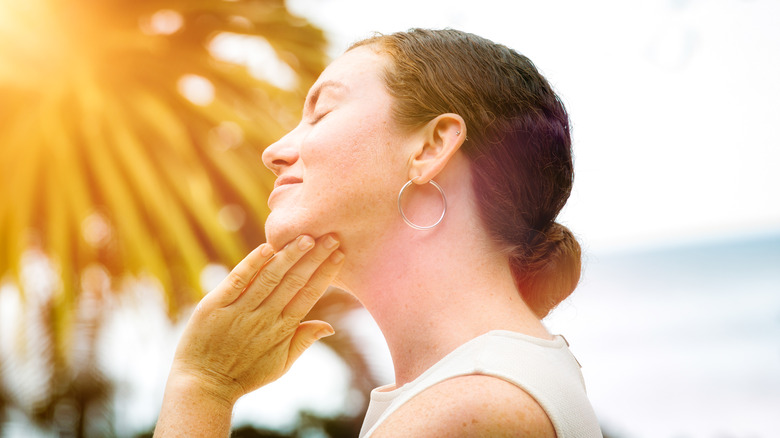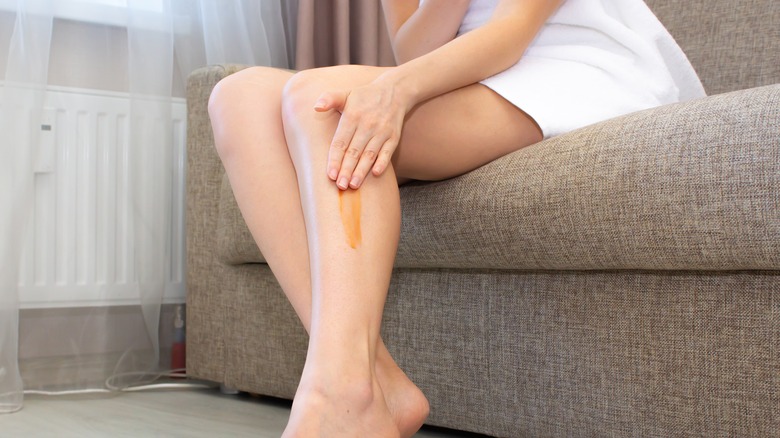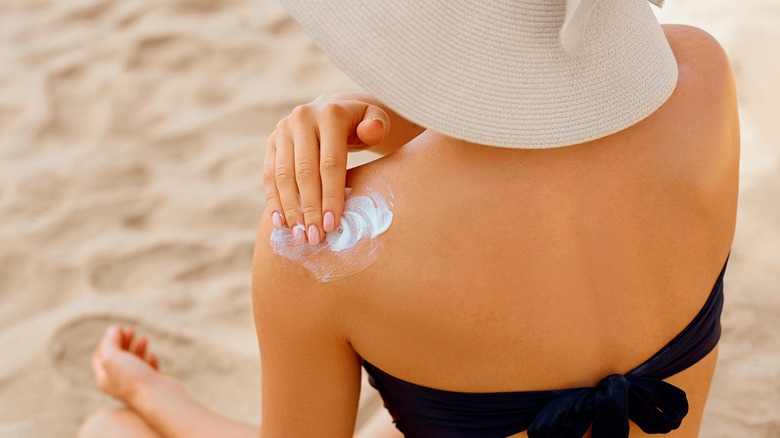Yes, You Need To Wear Sunscreen After Self-Tanning - Here's Why
Listen up, sunkissed glow lovers: the sun's harmful UVA and UVB rays don't care whether or not you have a base tan, and neither should you. Beauty standards that center around bronzed skin might try to bend the rules when it comes to sun protection, but the fact is that sunscreen is a non-negotiable part of a healthy, effective skincare routine — full stop.
Melanin is the body's natural defense mechanism against sunburns. The more melanin the body produces, the darker the skin becomes. Creating a base tan to protect the skin by getting a jumpstart on melanin production is a common myth, but according to UCF Health, base tans from previous exposure offer virtually no sun protection.
Base tans only create a preemptive layer of damage later exacerbated with repeat exposure, and self-tanners aren't any safer. When it comes to self-tanner base tans, the risk becomes even more pronounced — here's why.
How self-tanners differ from sun tanning
Self-tanners are touted as a safe alternative to tanning beds or sun exposure, which is true for the most part. These products can achieve a warm, sun-kissed glow without soaking in UVA and UVB rays for hours on end, but they aren't magically causing the body to produce more melanin like one might think.
Unlike traditional UVA/B tanning, self-tanners use a coloring agent called dihydroxyacetone or DHA to stain the skin. When applied topically, DHA reacts to the skin's amino acids to produce melanoidins, which are brown polymer pigments. These pigments sit on the outermost layer of skin, creating the appearance of a tan without actually increasing melanin (via the American Journal of Clinical Dermatology).
Think of a self-tanner like hair dye. A brunette can dye their hair blonde, but when their roots grow back, they'll still be brunette. Similarly, a person with lighter skin can use self-tanner to stain their skin to be a darker shade, but when these outermost dead skin cells naturally wear off, and new cells are produced, their melanin levels — and ability to avoid sun damage — remain the same.
Using self-tanners and sun protection simultaneously
Moreover, self-tanners can make it more difficult to visually identify a sunburn since the pigments artificially stain the skin. While it might be more tempting to skimp on the sunscreen when you're already a deep, golden bronze, this is exactly when your skin needs the most protection. And luckily, there are plenty of blotch- and streak-proof sunscreen options that will protect both your skin and the self-tanner on top of it.
PopSugar recommends using oil-free sunscreen formulas that won't break down the color of your self-tanner (or cause your skin to break out, thanks to their non-comedogenic qualities). Mineral and chemical sunscreens also protect differently, each with pros and cons. Mineral sunscreen reflects light and sits on the skin, making it prone to leaving white casts or spreading unevenly. Chemical sunscreens can be applied more evenly and thinly because they are absorbed into the skin, which could lead to skin sensitivity and other health concerns (via Prevention).
No matter which sunscreen you choose, the most important thing is that you use it. Self-tanners are a skin-safe alternative to UV tanning, but unless you're protecting your skin with sunscreen with repeated application throughout the day, you're not truly protecting your body. Always use self-tanner in tandem with sunscreen, not in lieu of it.


